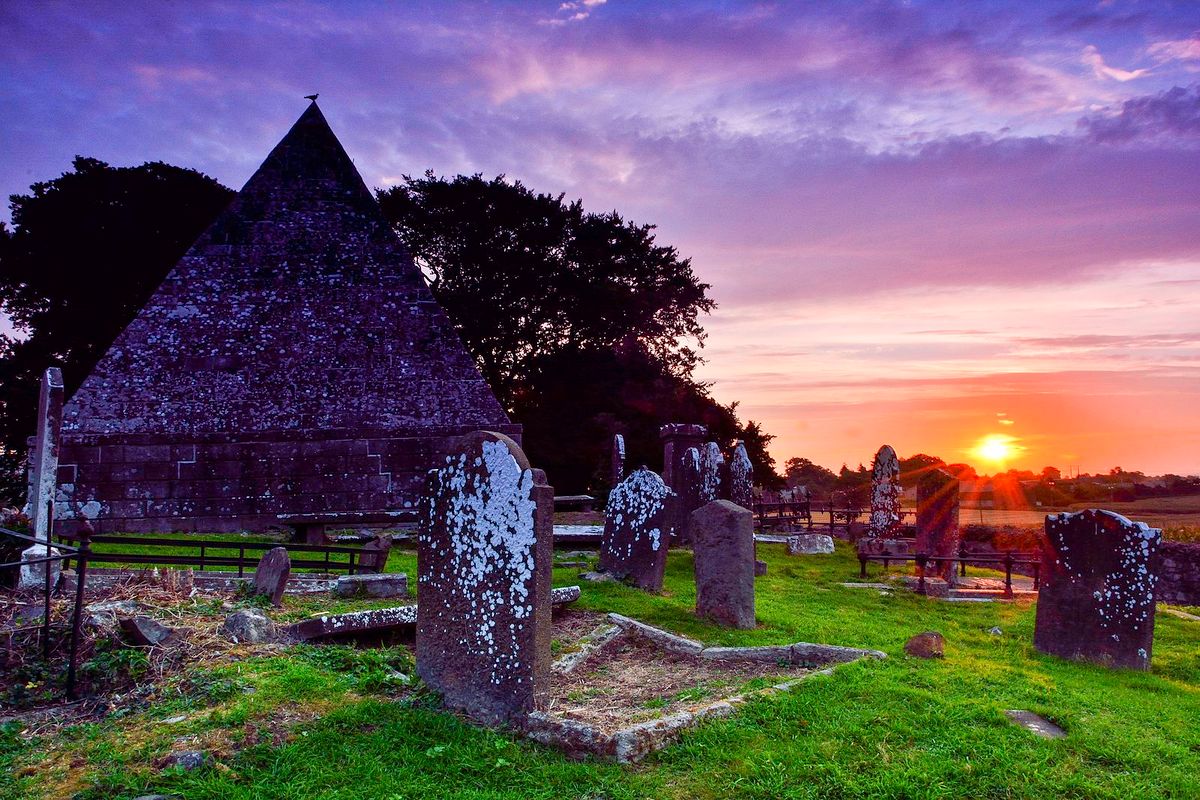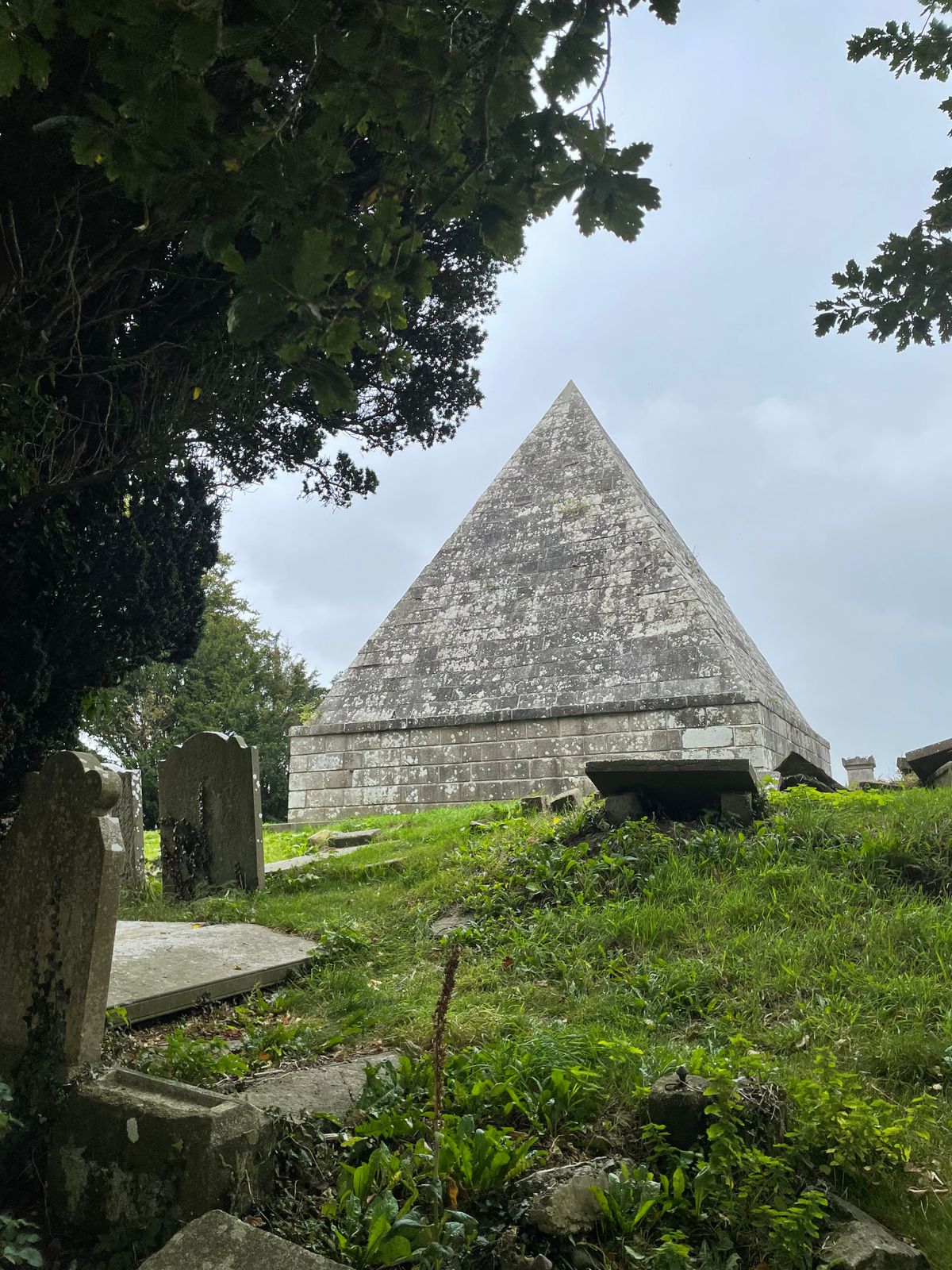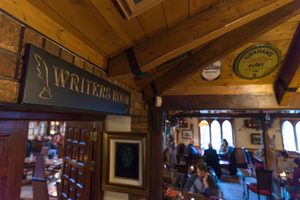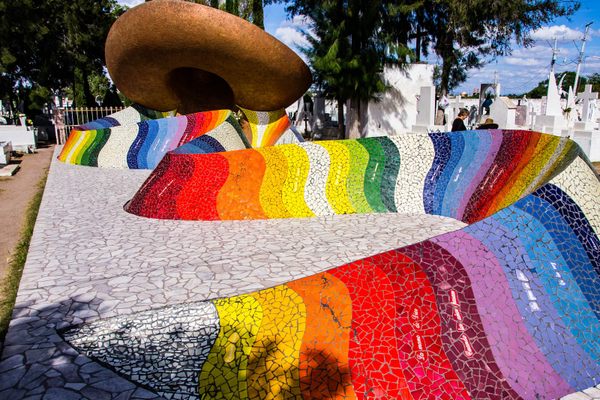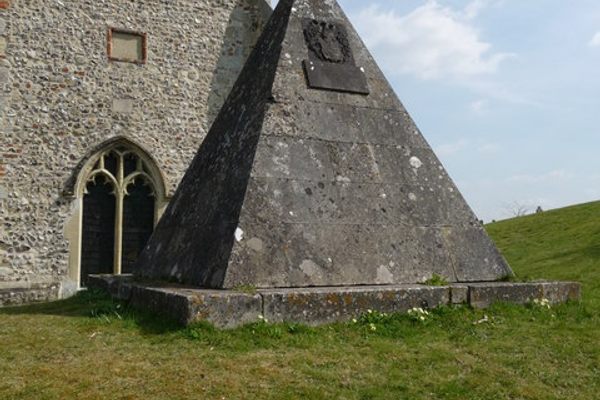About
The Howard mausoleum was described by English writer Sir John Betjeman as "the largest pyramid beyond the banks of the Nile." Whether or not this is true is hard to verify—though pyramids are symbolic of Ancient Egypt, they've been used as burial markers in cultures around the world for about as long as we've been burying people.
That said, when European gentry built pyramids to house their mortal remains, they did so in homage to the power and mystery of the ancient world. When Ralph Howard, Viscount of County Wicklow, had his family's pyramid built in 1785, he did so at the height of neoclassicism. In this time period, stylistic imitations of Greece, Rome, and Egypt not only displayed one's education but also one's good taste. Though these might seem at odds with a European setting, they're not entirely uncommon. Another Irish pyramid lies in County Offaly, further inland.
The Howard pyramid, standing 30 feet tall, is hard to miss amongst the somber granite headstones of Old Kilbride Cemetery. The long-winded epitaph explains that the mausoleum was placed there in memory of ancestors who had died a century prior and for generations of Howards to come. Near the pyramid is another Egyptian-influenced mausoleum; a temple building that apparently houses the bodies of lesser Howard relatives.
The pyramid has 33 slabs for coffins, which some take to be an indication of Freemason connections in conjunction with the mysterious pyramid. Only about half the slots are occupied though. The mausoleum was sealed without explanation in 1823, and it has been covered in ivy and plant life in the century and a half of neglect since. It's said that the last body interred in the pyramid was that of an infant Howard. The residents of Arklow reported hearing a baby's cries coming from the cemetery at night, which only ceased once the corpse had been removed and interred elsewhere and the pyramid was sealed for all time.
Related Tags
NEW - Discovering Ireland: Literature, Legend & Myth
Cozy pubs, dreamy landscapes, and friendly locals in Ireland.
Book NowCommunity Contributors
Added By
Published
September 2, 2016







